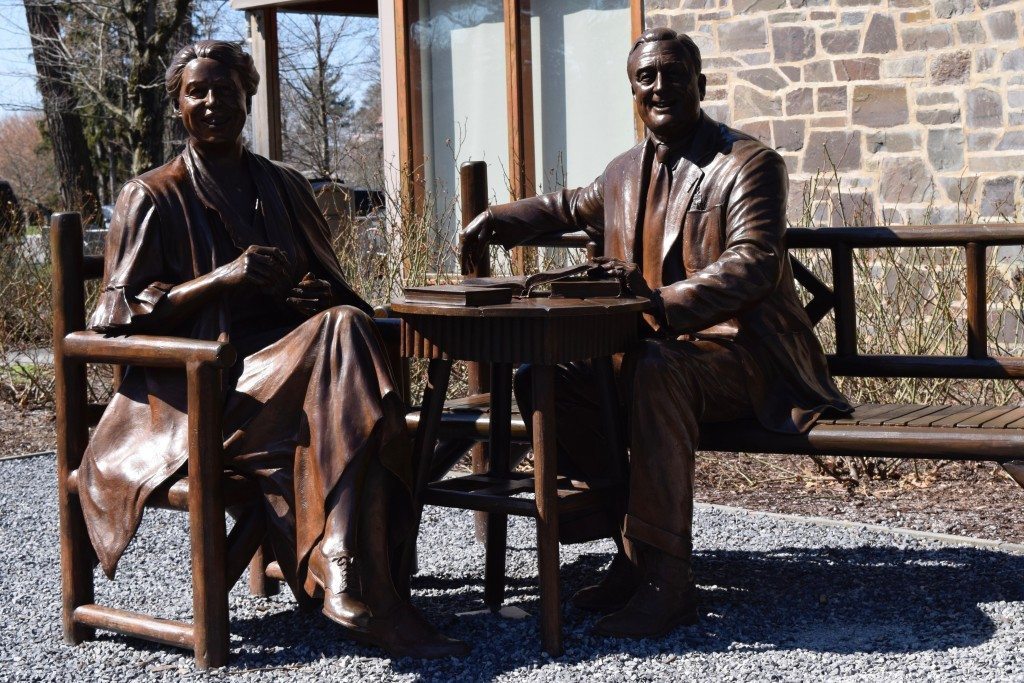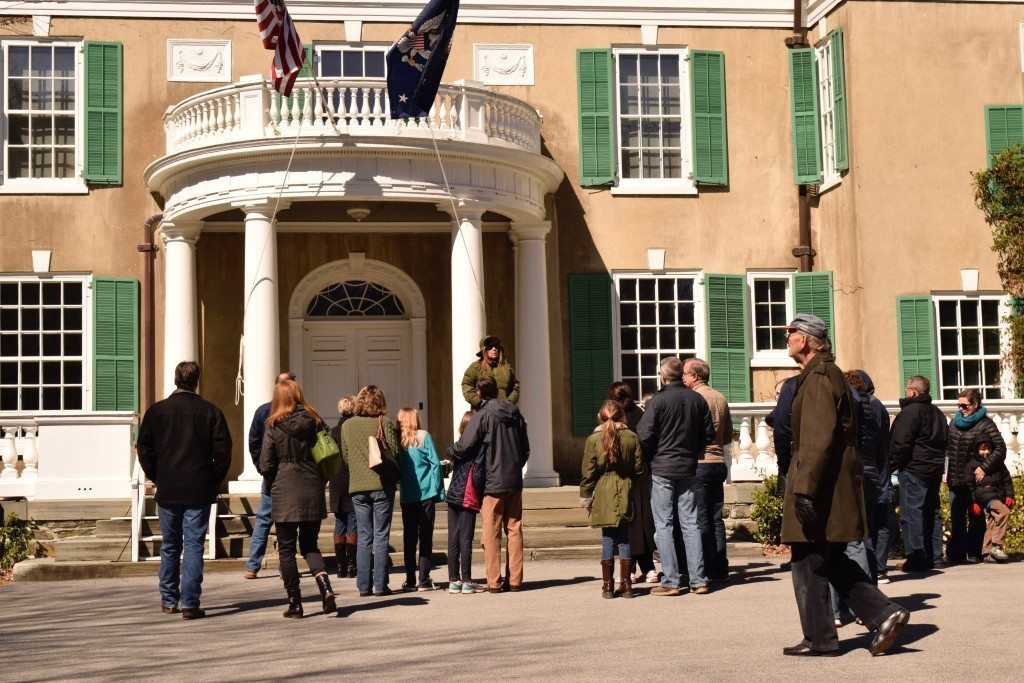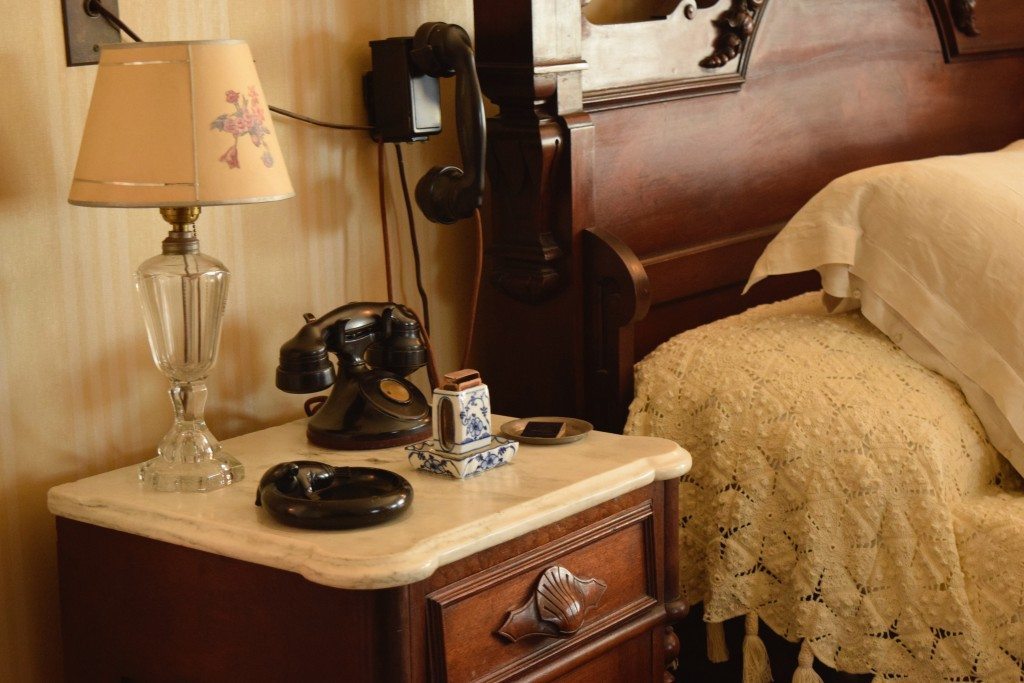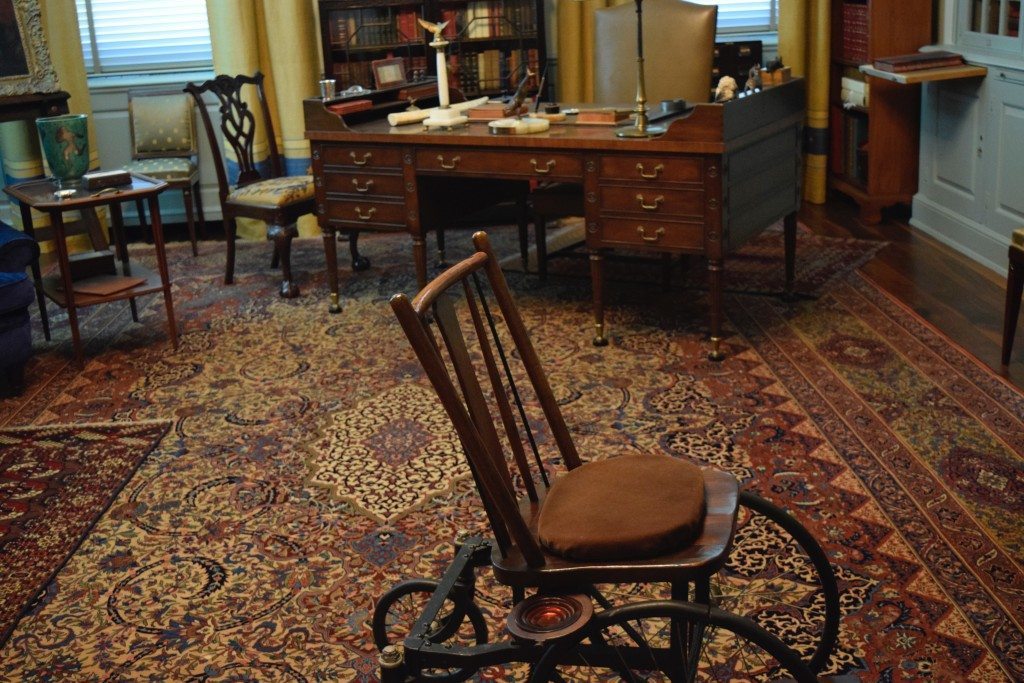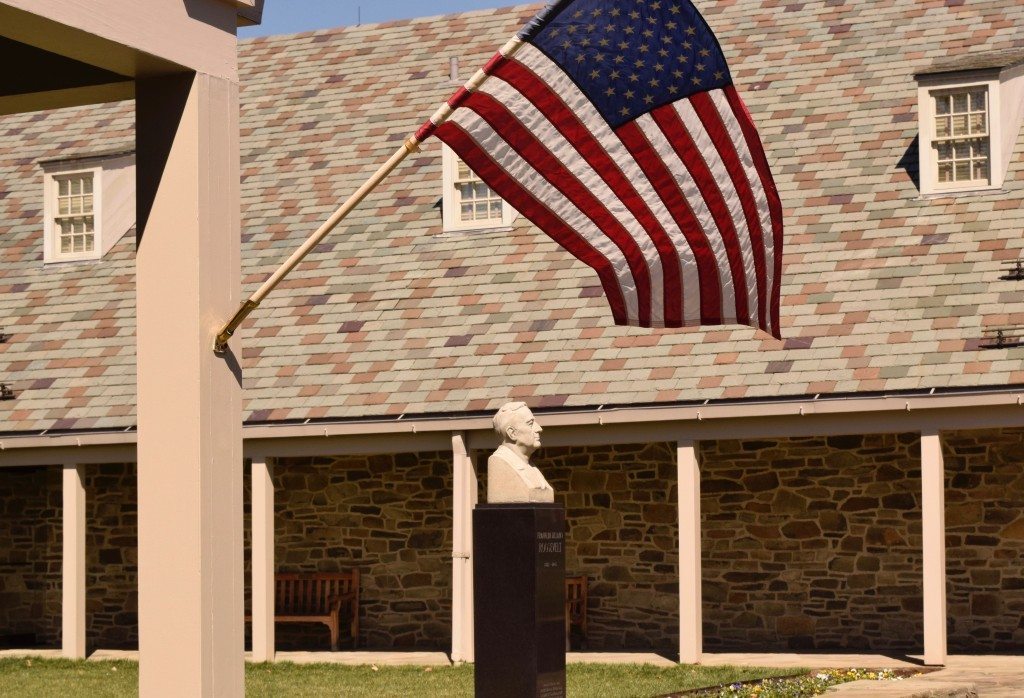Before There Was Bernie: A Visit to FDR’s Home and Library
I received a campaign ad from Bernie Sanders the other day. He compared himself to a legendary reformer, America’s one and only 4-term President, Franklin D. Roosevelt. Is Senator Sanders’ New Deal comparable to the old New Deal? I figured I’d take a ride up to Roosevelt’s home in Hyde Park, New York, and find out.
Located in New York’s Hudson River Valley, the Home of Franklin D. Roosevelt is like all of the U.S. National Park sites I’ve visited: it’s pristinely maintained and staffed with friendly rangers who know their stuff. Within minutes of my arrival, I had my ticket for a 10:30 a.m. tour and the lowdown on logistics at other area attractions including Eleanor’s cottage, Val-Kill, and the nearby Vanderbilt Mansion.
Our guide welcomed the morning tour group to the Hyde Park site, home to the Presidential Library, Museum, and the Roosevelt family home, Springwood, where FDR was born in 1882. He’s also buried in the garden beneath a monument that is the same size as his Oval Office desk. At one time, the Roosevelt estate measured approximately 1500 acres and included a horse track and tenant-operated farms.
Springwood was significantly remodeled by FDR in 1915, to accommodate the Roosevelts’ large family. The interior is distinctly Victorian with heavy, somber furniture, dense layers of chintz, and samples of Franklin’s many museum-worthy collections. Besides stuffed birds and nautical memorabilia, the President was and may still be the world’s single largest individual stamp collector – he had over 1 million.
Roosevelt was physically disabled when he took office; he did not regain the use of his legs after a bout with polio at the age of 39. He never appeared in public in the wheelchair he used at home – a tricked out kitchen chair. Springwood had an elevator to transport him from floor to floor and his private retreat at the far eastern edge of the property, Top Cottage, was completely barrier free.
The guided tour ended at the house but the ranger encouraged us to explore the many trails on the property and to spend some time in the Presidential library, the first and only one to actually be used by a President in office. It’s a trim Dutch Colonial building with an inviting lobby decorated with hundreds of letters. Remember stationery and the art of letter-writing?
In addition to the President’s study, there are many exhibits dedicated to FDR’s childhood, his political rise, his recovery from polio, and his terms of office. Particularly impressive was Roosevelt’s New Deal, the sweeping reforms and programs he implemented during his first term to end the Great Depression. Jobs acts, banking reform, an end to Prohibition, Social Security. FDR was willing to throw a lot of stuff at the wall; some of it stuck, some didn’t, but the country appreciated the effort and the sincerity of the President’s intentions which he conveyed during his many “Fireside Chats”. You can listen to samples in a replica 1930’s-era kitchen.
I blipped through the Library rather quickly so I could dash over to Val-Kill to get me some Eleanor. I was beginning to fawn over FDR (So brilliant! A Harvard man! Dashing good looks!) and felt I needed a reminder that he had a great wife who he treated rather shabbily. Eleanor, like Hillary many years later, stood by her man, but also carved out her own deep and lasting legacy. She spent little to no time on her social responsibilities as First Lady and instead focused on spending her days with America’s people so she could understand their problems and influence her husband’s policies.
After FDR’s death in 1945, Eleanor continued to advocate for international peace and was a staunch supporter of the civil rights movement. She had her share of enemies; the Ku Klux Klan at one point placed a $25,000 bounty on her head. Her wood-paneled cottage is simple and common, but history was made within its walls. Guests to Val-Kill included Churchill, Senator John F. Kennedy, and Soviet leader Nikita Khrushchev.
I felt a bit ashamed that I’ve lived my entire life within spitting distance of Hyde Park and was so ignorant about how much modern history was made here. I barely scratched the surface during my visit and can’t wait to return; it’s ascended to the top of my “Places to Take Visiting Friends and Family”.
While wandering around the Library, I found this FDR quote:
“The country needs and, unless I mistake its temper, the country demands bold, persistent experimentation. It is common sense to take a method and try it: If it fails, admit it frankly and try another. But above all, try something.”
Our current political cycle has left me nauseous and sad. This little nugget made me hopeful. Maybe, just maybe, we’ll elect a leader and let him or her try something bold. If it succeeds, great. But the true test of our national character will be if it fails. Will he or she graciously admit the mistake? And will we as a nation accept the fact and let them try something new? If we can folks, that’s when America will be great again.
If You Go:
The FDR Presidential Library and Museum and the Home of Franklin D. Roosevelt (operated by the U.S. National Park Service) are open 7 days a week. Check the website for hours of operation and tour times. A joint admission is offered for $18 (seniors $6; children 15 and under are free). A separate admission ($10) is charged for Val-Kill.
The grounds are lovely with many marked trails to explore. If you climb to Top Cottage, you’ll be rewarded with long views past the Hudson River to neighboring Ulster County.
Beginning on May 1, the Parks Service offers “The Roosevelt Ride”. Visitors arriving by train via Metro North are picked up and shuttled to the main park site. Additional shuttles are provided for transport to Val-Kill and nearby Vanderbilt Mansion, and guests are returned to the station to catch the 5:00 p.m train back to Grand Central. The service is free.
Food service on site is limited to Uncle Sam’s Canteen. I expected a WW II camp-style setup; it’s a simple, clean snack bar. I think you’re better off packing a picnic to nibble at during the day. Or take a short walk from Val-Kill to Clancy’s Cafe and Creamery. They offer simple sandwiches and delicious homemade ice cream.

